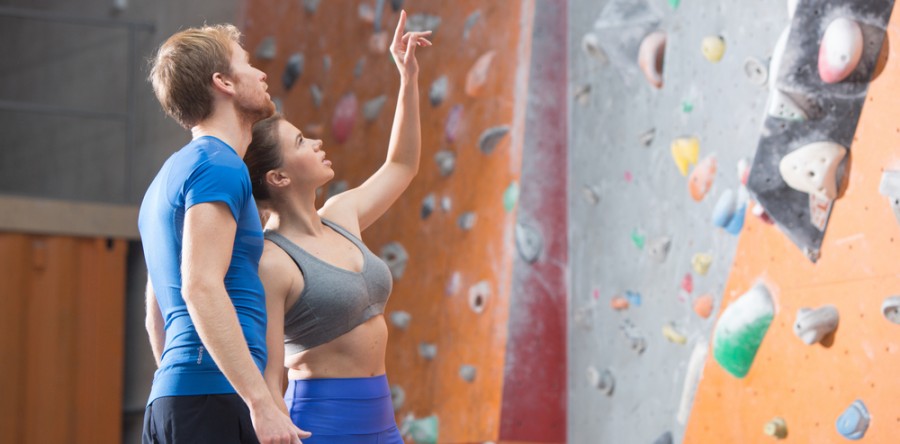Looking for some extra help perfecting your technique on the wall? Well, I’ve been researching the best way to train for ascending the wall. So here are 5 drills to improve your rock climbing technique.
On-Sight Climb
Take a look at a wall and think about how you’re going to get up it. Envision yourself climbing it. Or take a look at a boulder and see how you’re going to climb to the top. Then climb it. When you’re done go to another wall and start the process all over again. This builds your mind’s eye for examining a wall and building your climbing intuition.
This may sound weird, but it really helps. Instead of practicing the same wall over and over again, climb as many different walls in one session as you can. This kind of practice is also used in good music rooms across the world. It’s called sight-reading. A sheet of music is placed in front of you, and you play it. There’s no practice beforehand. You don’t hear how it’s played first. You just have to do it, and you will fumble. You then get another piece of music placed in from of you, and another, and another. And soon, you begin to form a gut instinct as to the correct way to play music.
This is the same for rock climbing. If you’re an experienced climber, or at least know your basics, do a series of on-sight climbs, but if you want to up your game, this is the best way to do it.
Footwork Practice
Footwork is just as important as upper body work. Footwork in climbing gives you that extra stability that you really need so you can reach the hold above you. Footwork is time intensive and a little bit tedious to learn, but when it comes to Rock Climbing, you definitely need to put your time into doing it.
One of the best ways to practice this is, believe it or not, Twister. That’s right, the kid’s game. Every time you spin the wheel, watch your feet as you place it on the colored dot. Even if that spot is right next to the spot where your foot is already placed, watch your foot. Don’t move eye contact away from your foot until it has been fully placed.
Now, you won’t necessarily gain extra strength in your foot, but mindfulness over where you place your foot will be helpful as you put it all together. Even better, try and do it quietly. This is especially great if you are playing Twister on a creaky wood floor. If you can place that foot without creaking the floor, you’re definitely getting better.
One Handed Climbing
This exercise is to build up one side of your body and then the other. This is a great exercise for a route that you’ve already done and you know is pretty easy. It should definitely be at a skill level lower than your current level. Once you find that route, try and climb it one-handed. This is a mental puzzle solving game, a one-armed exercise, and a leg flexibility exercise. You’ll find yourself using your legs more because you have to climb the wall with only three body parts. With the free arm, you can do whatever you want with it. Just don’t use it to grab any part of the wall.
Fatigue Training
Fatigue training is exactly what it sounds like. This is the training that, believe it or not, is absolutely essential to getting better at anything you really want to do. When you’re tired, it’s harder to focus, but you really start internalizing all the things you learned when you weren’t tired. Especially when you’re training in the heat (which makes you even more tired).
Fatigue training makes you stronger by working everything harder. So when you’re tired from that super hard climb, go to an easier wall that’s more forgiving of mistakes and just climb it. This is more about endurance training than anything else.
https://rusbank.net/company/zaymer_ru/
Horizontal Training
A lot of rock climbing is about the ascent, but how about the lateral? Sometimes when we’re climbing the wall we forget that we can go to our left and right. But outdoor climbers have to do this all of the time just because there may be no real handhold to attach too. Find a wall that’s really wide, or a boulder that’s really wide, and just go side to side. This is perfect for simple drills as well, and watching your technique as you place your hands and feet.












